WHAT A CATCH
This sportfisher is a jewel box, inside and out
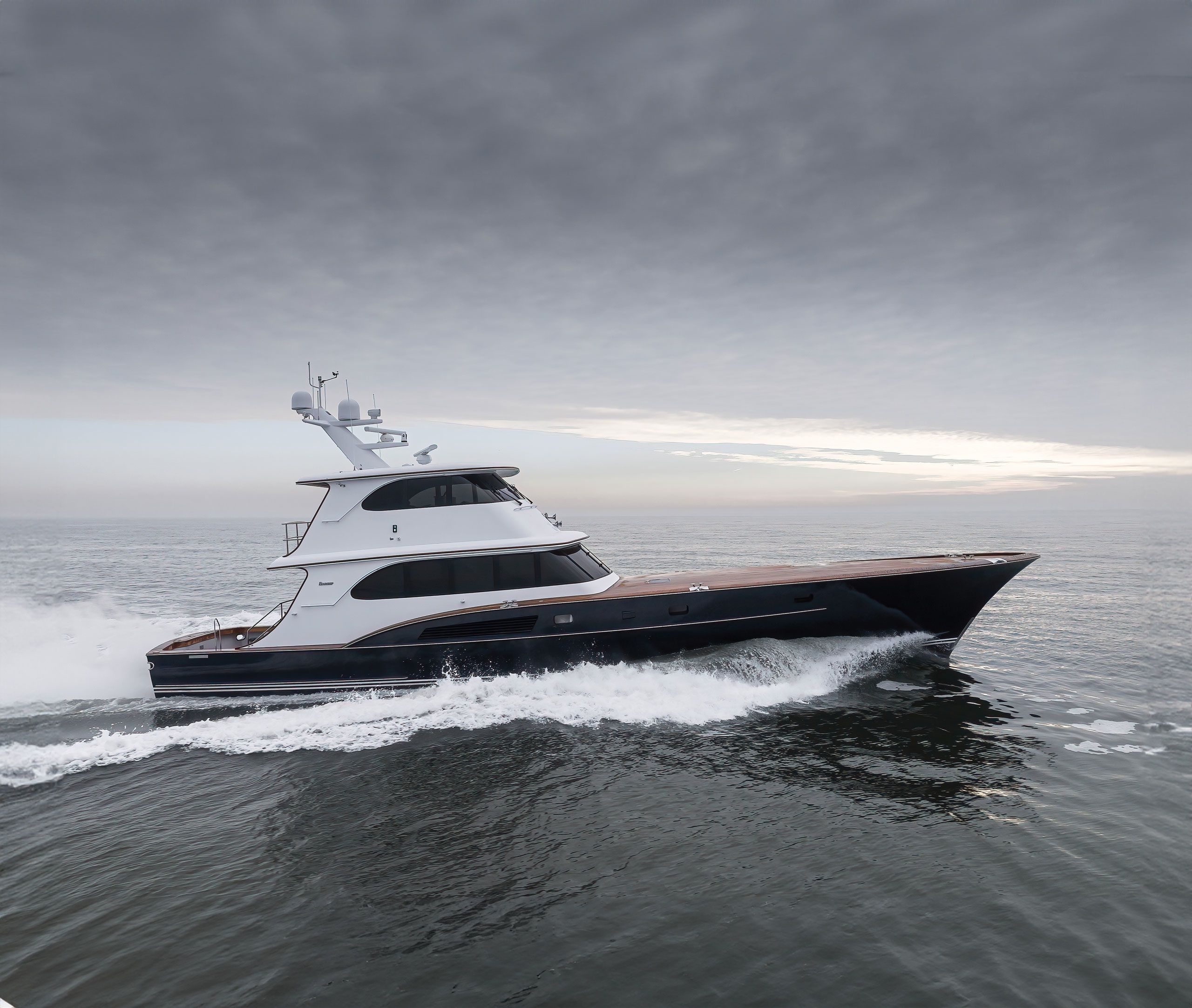
The owner of this sportfisher does not fish, he just admired her for her good looks and fine quality, Sam Fortescue finds out
FEADSHIP
This might just be the ultimate fisherman’s tale. The story of the one that didn’t get away – one that measures 27 metres from head to toe. Of course, we’re not talking fish here and the fisherman in question is a boat that, fresh out of a sensitive refit, is an exceptionally rare beast. Let me explain why.
Catch is the new name for Patriot, a sportfisher built by Feadship as Gallant Lady in an innovative mix of aluminium and fibreglass back in 1984. The Dutch yard is not the first name one would associate with this type of boat and would be unlikely to make even the top 20. It built only five of this sub-genre of yacht, all for American clients and all between 1977 and 1988. But Feadship has long been a custom builder and when it undertakes a commission, it does a proper job, so a quantity of research went into this project.
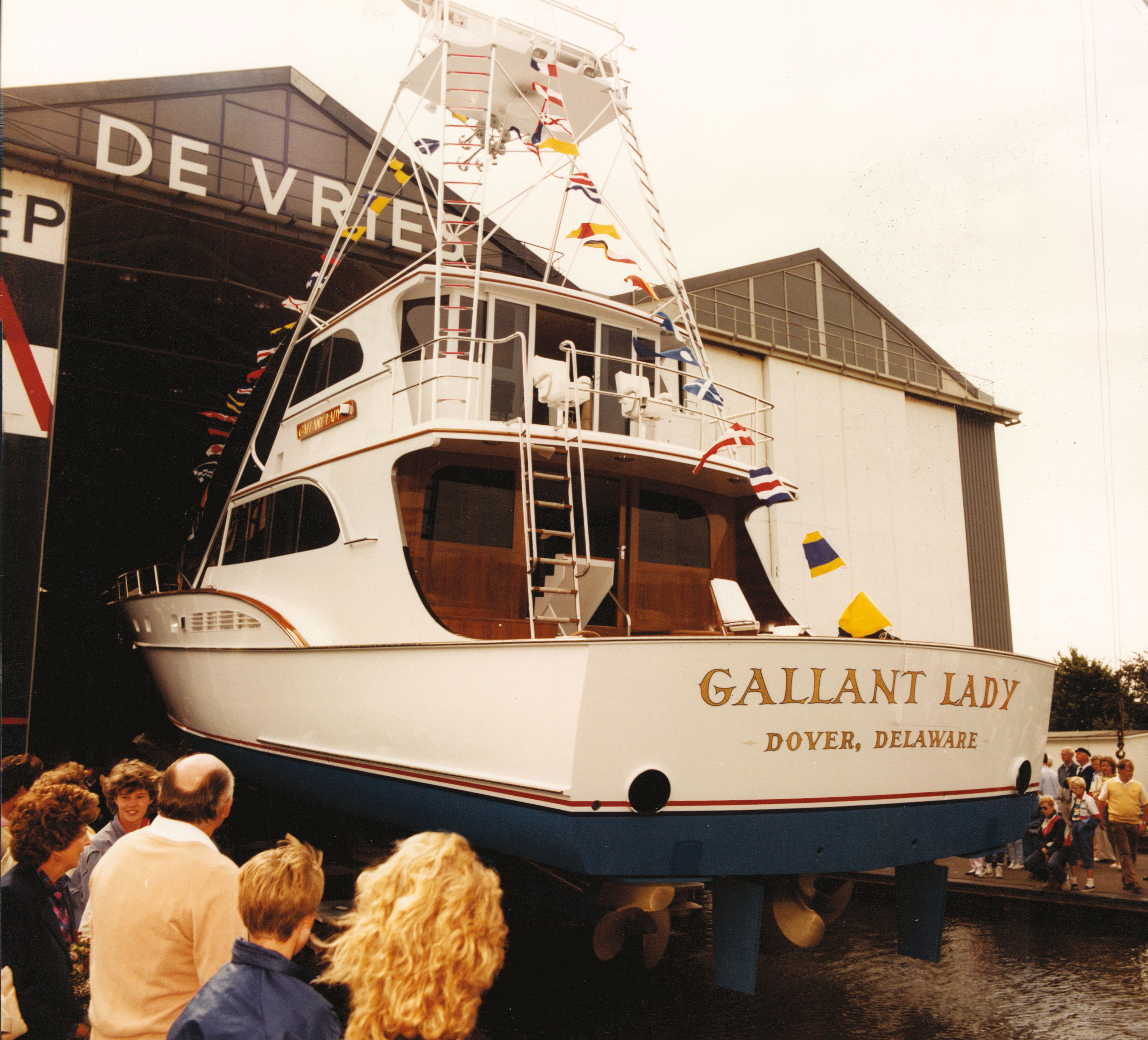
FEADSHIP
FEADSHIP
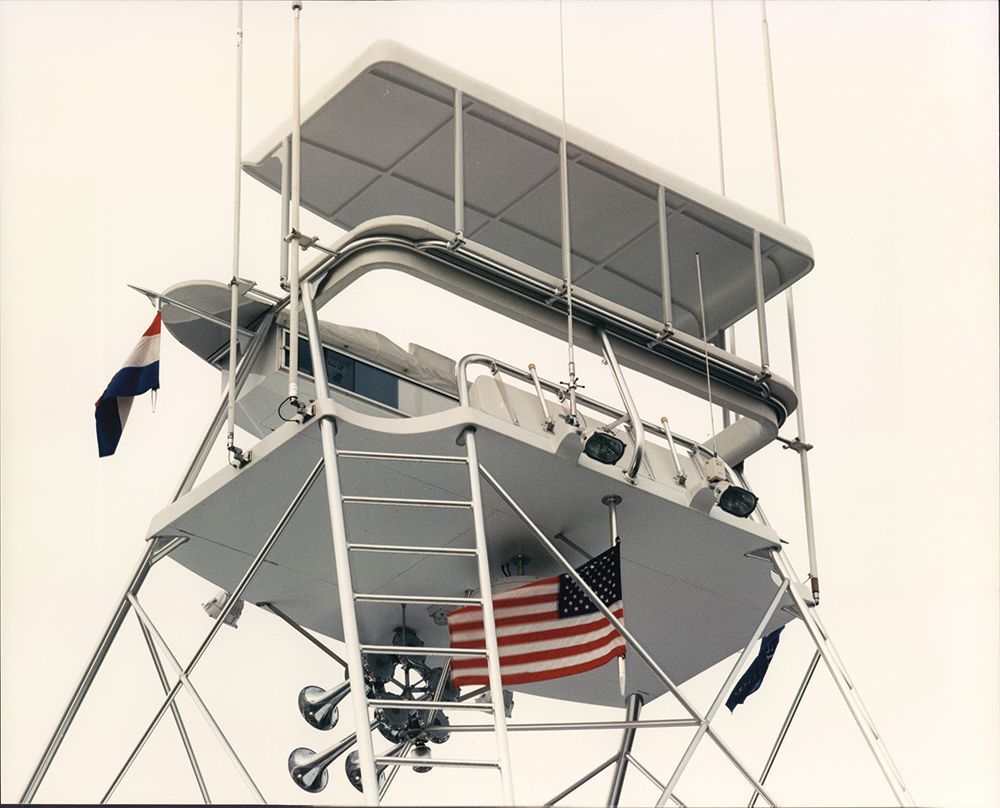
FEADSHIP
FEADSHIP
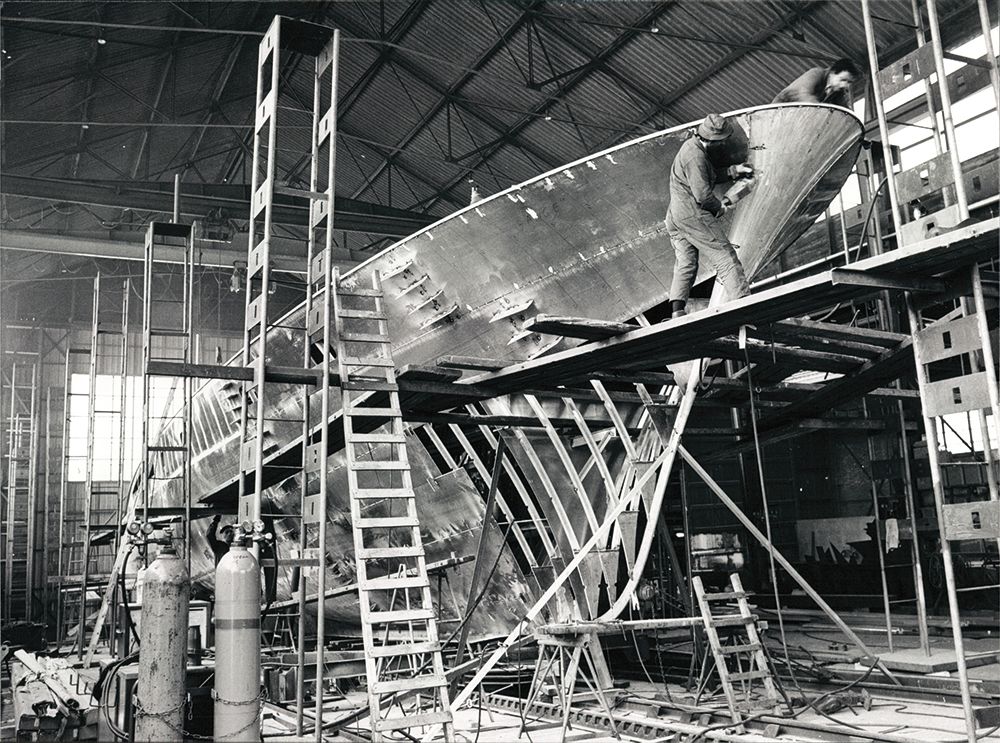
FEADSHIP
FEADSHIP
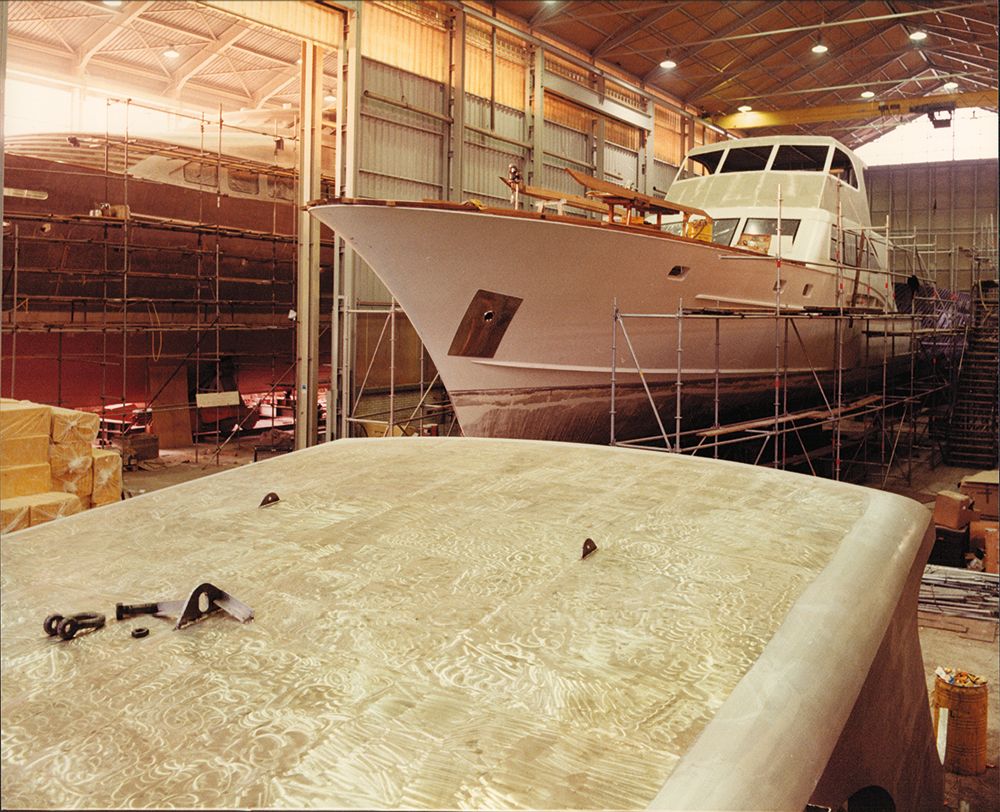
FEADSHIP
FEADSHIP
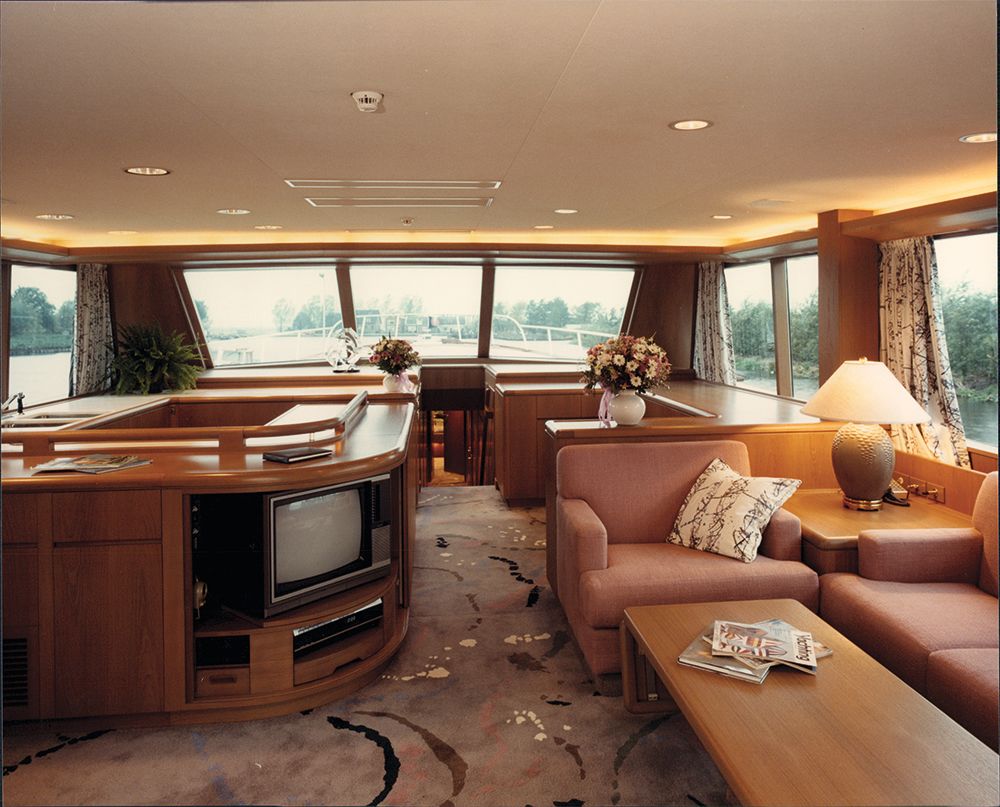
FEADSHIP
FEADSHIP
In 1984, Gallant Lady was launched with fanfare at the de Vries Scheepsbouw yard in Aalsmeer (top left). Gone is the elaborate tuna tower that was a key part of the original boat’s sportfisher design (top right). How the boat looked at various stages in 1984 (bottom row)
The original plans and documents are kept in the yard’s yachting library, and they show Frits de Voogt’s original concept. With a dramatically cambered foredeck, heavily flared topsides and deeply inclined superstructure, she’s the quintessence of a fighting boat.
The late Jim Moran, founder of Florida-based JM Family Enterprises, was the original client for the boat, which was a replacement for his 1973 18-metre Rybovich. “Moran sought a bigger boat with an enclosed flybridge, but Rybovich declined to build it,” Francis Vermeer, Feadship’s marketing manager, says. “He had toured a 42-metre Feadship named Carmac VI launched in 1981 for another American entrepreneur and, impressed with that yacht’s quality, thought asking if the Dutch would build him a sportfisher was worth a try. Feadship was game if they could build two of them.”
“I was after a bit more style and panache in the execution of certain items, from the teak to the paint, to the interior sophistication that you can only get at Feadship. The quality you get in Holland simply cannot be surpassed”
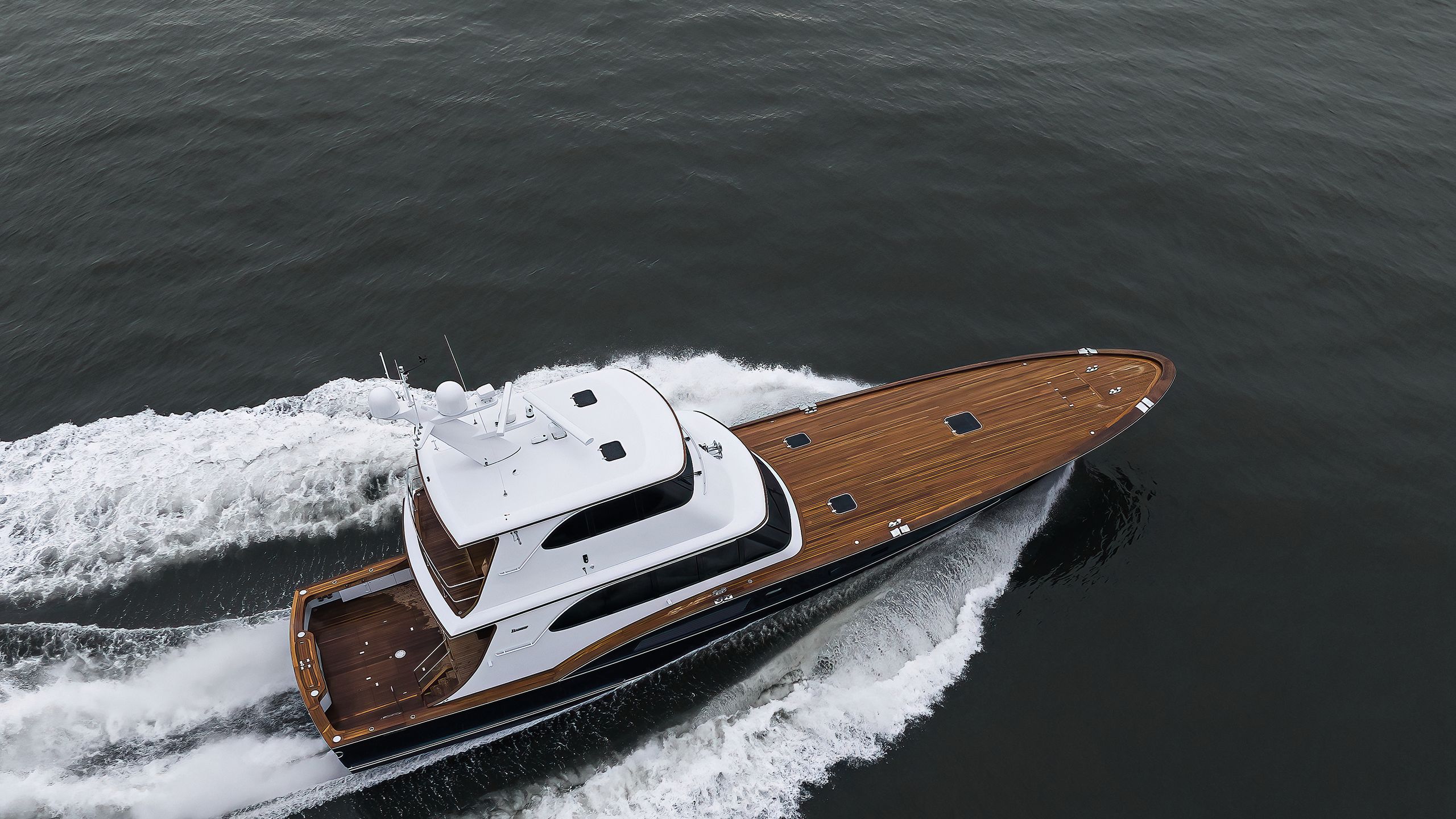
Catch’s owner is a bit in the Jim Moran mold, a man who has, by his own admission, “owned a great many boats – too many to justify in my short time on this lovely planet.” He often saw Patriot tooling up and down the US East Coast and developed a long-term crush. “In my opinion [she is] the prettiest of any of Jim Moran’s boats, Catch is a jewel box inside and out that has been pretty well looked after during her nearly 40 years afloat,” he says.
When I visit the yacht at Royal van Lent, I see what he means. Catch is docked in the shadow of 94-metre Viva, also in for a bit of work. This proves helpful to accurately assess Catch’s scale. Her proportions are so perfect that it is hard to tell how big she is until you see how her superstructure reaches higher than the looming foredeck of Viva.
She arrived from Florida as cargo in summer 2022 shortly after a new owner came along. He was determined to whip her into perfect shape before he began his cruising program, and so decisions happened fast. “He had done a refit of a previous Feadship at a different yard and was determined to do it with the build yard this time,” Peter Wilson of MCM, the owner’s rep, tells me.
“I was after a bit more style and panache in the execution of certain items, from the teak to the paint, to the interior sophistication that you can only get at Feadship,” the owner says. “The quality you get in Holland simply cannot be surpassed, and it costs no more when you compare tulips to tulips.”
The Dutch yard is not the first name one would associate with this type of boat and would be unlikely to make even the top 20
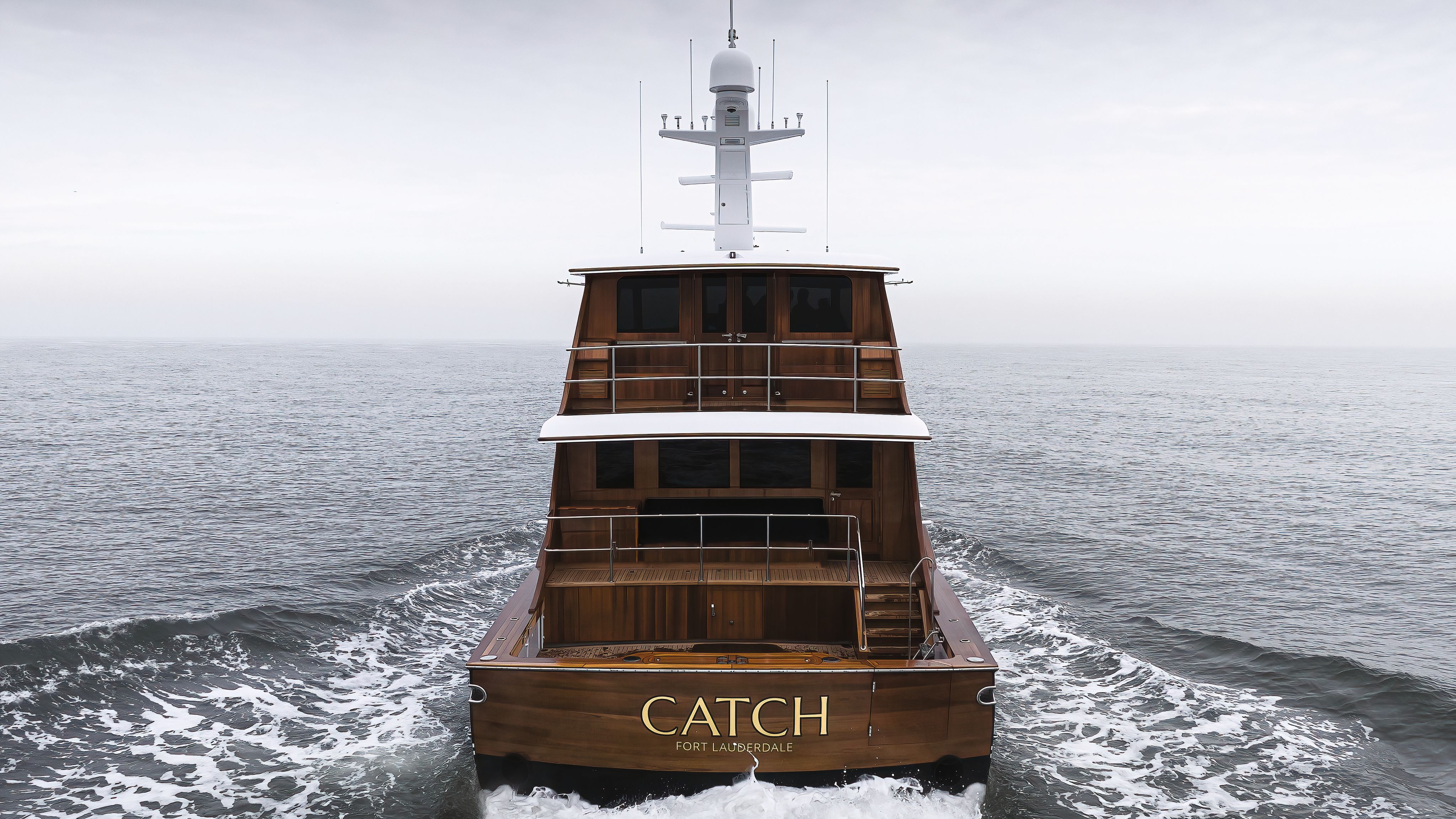
FEADSHIP
FEADSHIP
“In my opinion the prettiest of any of Jim Moran’s boats, Catch is a jewel box inside and out that has been pretty well looked after during her nearly 40 years afloat”
By the time the boat was unloaded into the chill, grey waters of the North Sea, the job sheet was still largely undefined. Feadship found out quite late that a refit project was heading its way. “We’d normally have six months’ lead time, so we can prepare the location,” Pier Posthuma de Boer, Feadship’s director of refit, says. “The benefit is that this was a smaller boat, and so we could accommodate it flexibly.”
The next step was to bring in designer Adam Voorhees, who had worked with the owner on previous boats. “The owner and I had walked the boat when she was up for sale, and within 30 minutes, a solid plan was put forward,” Voorhees says. “The boat had had an insane refit not so long ago to get her up to current condition, and it had been done well. In that sense it had great bones. [But] there was teak upon teak upon teak in the interior, so the design brief was to tone that down a little. It needed to be a relatively quick refit, so as not to invest too much time – just a couple of touches that resonated with the owner.
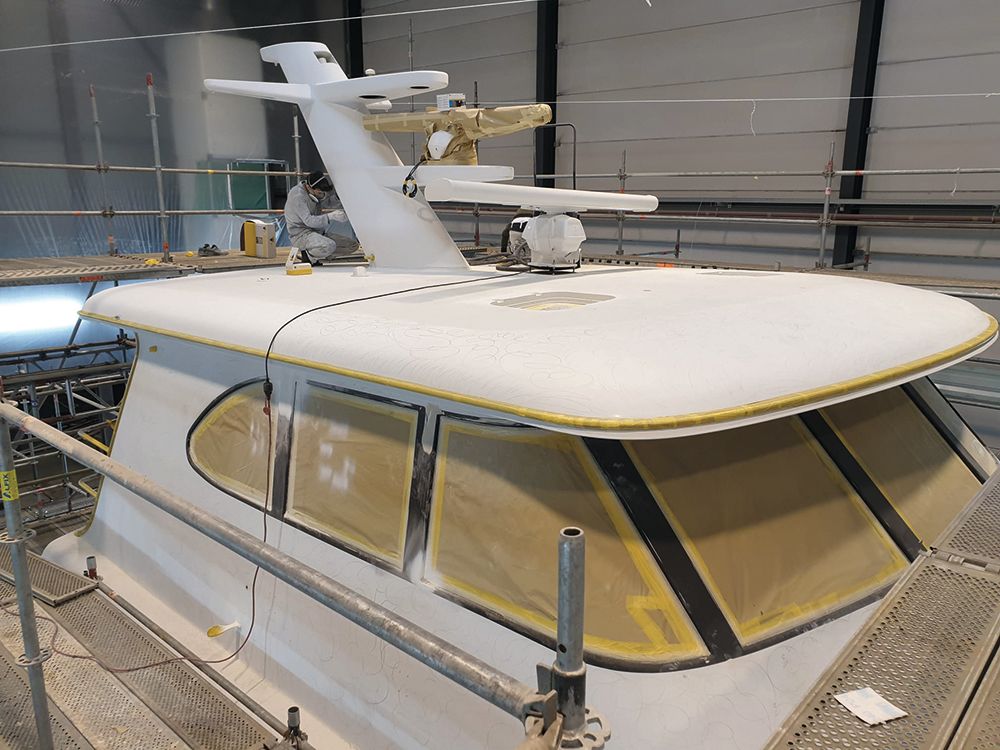
FEADSHIP
FEADSHIP
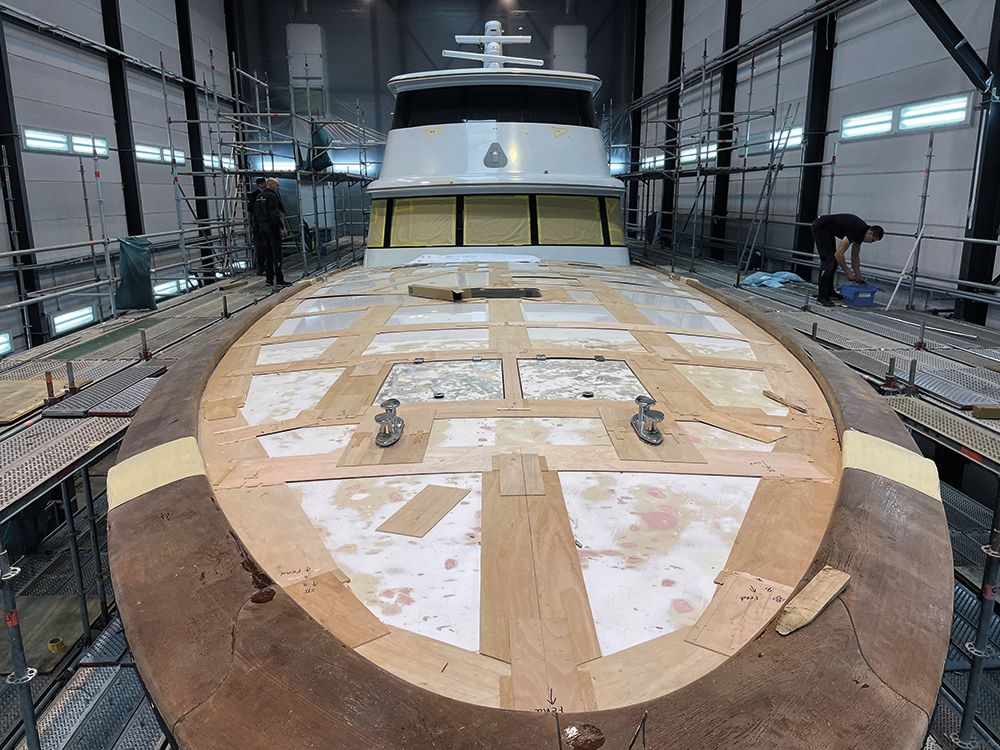
FEADSHIP
FEADSHIP
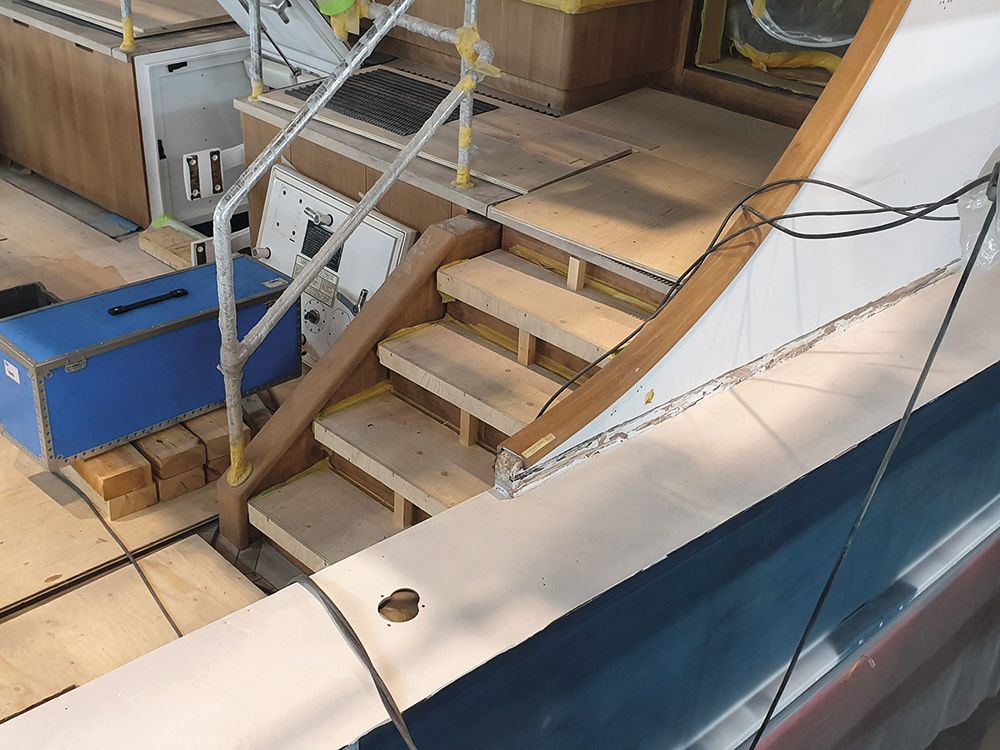
FEADSHIP
FEADSHIP
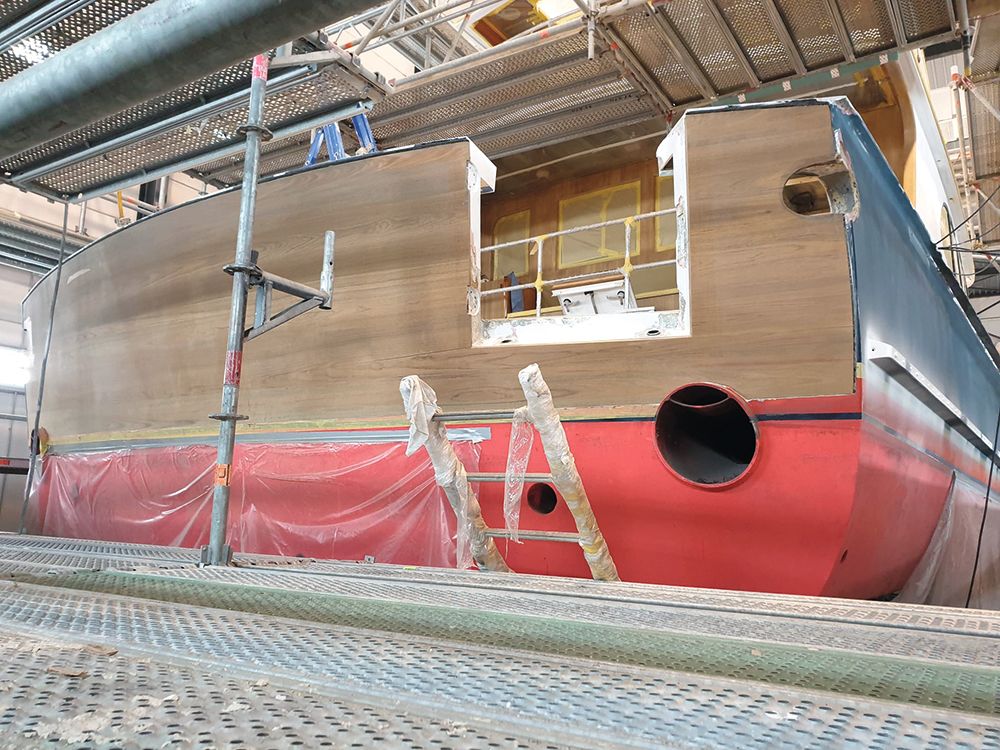
FEADSHIP
FEADSHIP
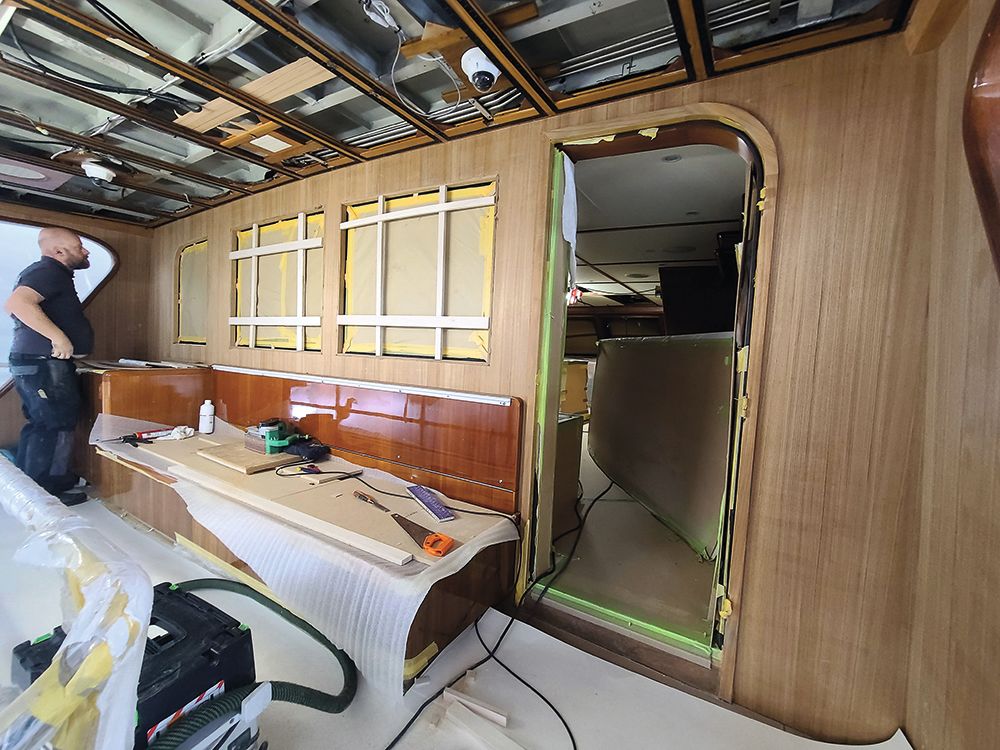
FEADSHIP
FEADSHIP
As Patriot, the boat had twin-tone decks that mixed teak astern with a white-painted finish forward. Sumptuous new teak now covers the whole boat
Finally, Wilson drew up a detailed schedule of the work the owner wanted to see. While decor changes were minimal, top of the list was to create an additional twin cabin below deck. Then there was to be a vast new teak foredeck in place of the slightly austere white painted finish, and a strong owner request for a hot tub and gyroscopic stabilization.
“The boat had an insane refit not so long ago to get her up to current condition, and it had been done well. In that sense it had great bones.”
Not even the experienced artisans at Feadship can conjure up extra accommodation, so something had to be sacrificed to create space for the new cabin. And here, the strategy was twofold. “The tender was stored on the foredeck and had a crane to lift it into the water,” Wilson says. “It had a not-insignificant foundation beneath it and removing that opened up a lot of space in what had once just been the wardrobe for the master cabin.”
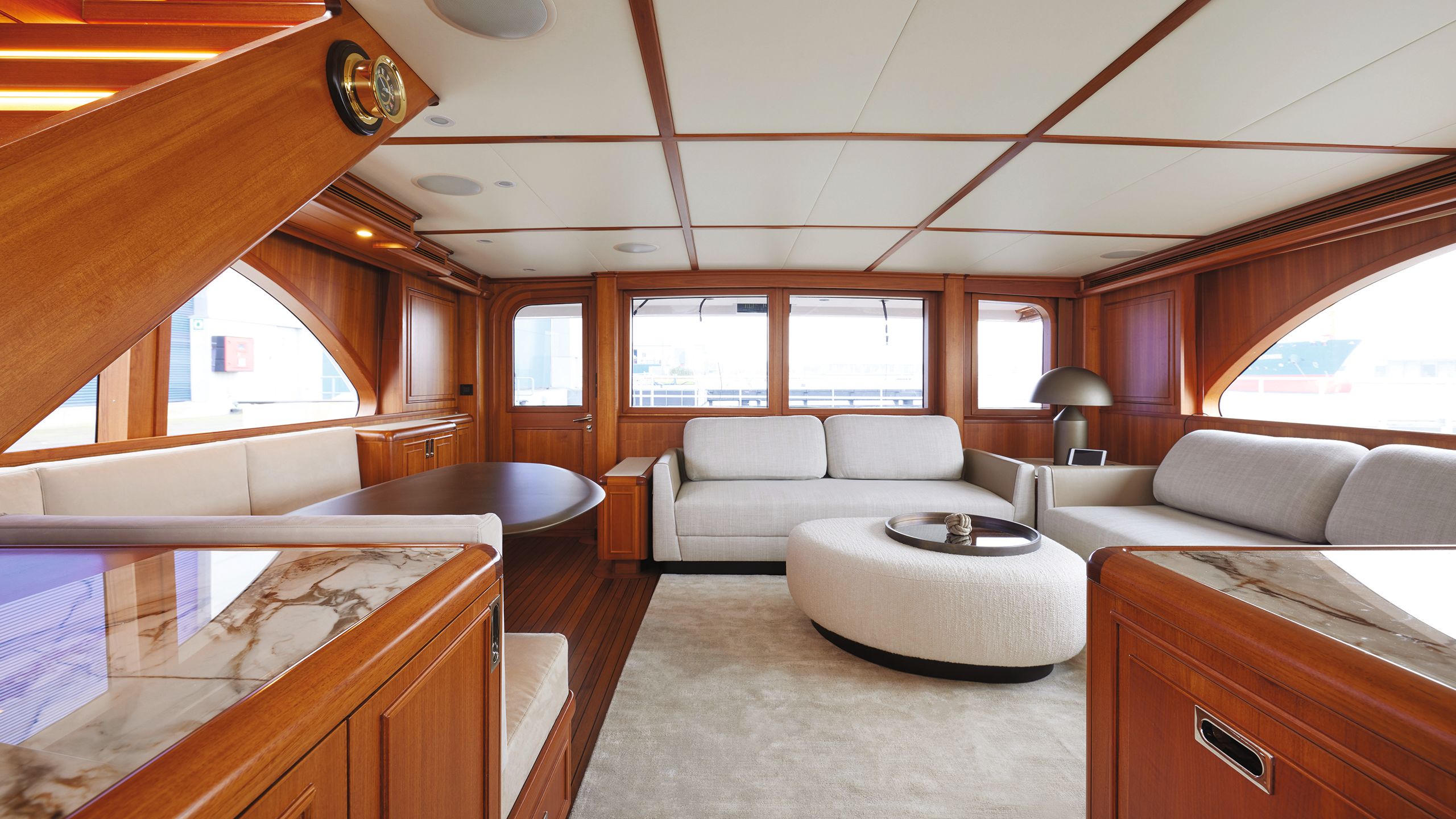
FEADSHIP
FEADSHIP
New carpets, sofas, marble countertops and fabric deckheads balance out the luscious teak
The second tactic was to take a nibble out of the corner of the owner’s stateroom and build that into the new cabin. It may not have an en suite bathroom (this is the fourth cabin on an 27-metre sportfisher we’re talking about, after all), but there is plenty of space for two comfortable bunks and a convenient cupboard for clothes. And as Wilson points out: “If I hadn’t told you, you would never have known the cabin wasn’t part of the original yacht!”
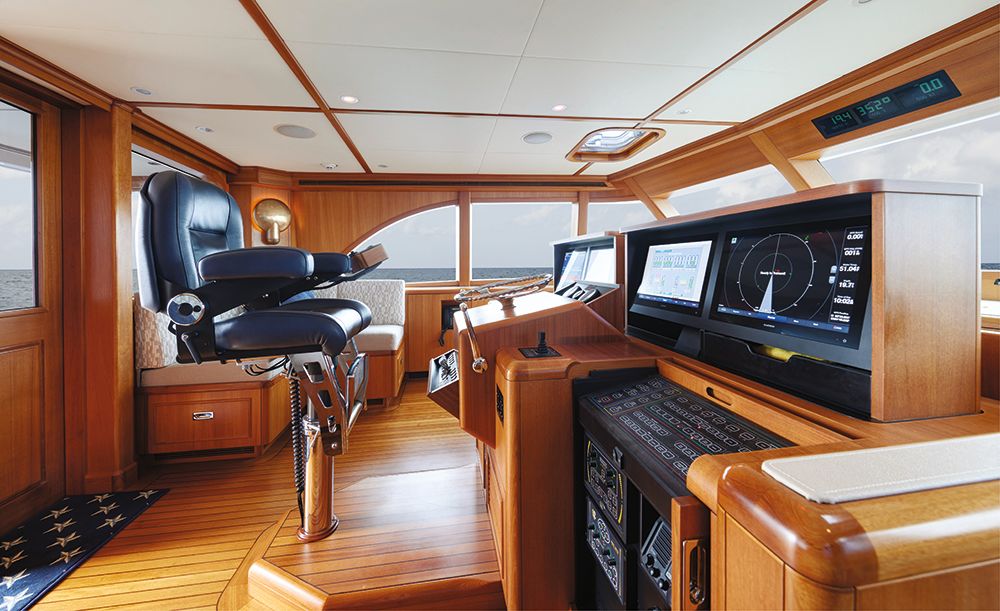
FEADSHIP“Refined gentleman’s smoking lounge” is how designer Adam Voorhees sums up the boat's style
FEADSHIP“Refined gentleman’s smoking lounge” is how designer Adam Voorhees sums up the boat's style
Its light-coloured linen upholstery and rich teak panelling look just the same as the other cabins. They’ve all had fresh carpets, new headboards and attractive raw-silk effect fabric panels on the walls, so they share the same feel. The addition of ballast corrected the ever-so-slight trim created by the crane’s removal.
Feadship's sportfishers
Sportfishers are an almost uniquely American phenomenon, emerging in the US in the 1930s alongside growing demand for big game fishing. In the beginning, conventional launches were used, adding features such as fighting chairs, tuna doors and aluminium outriggers. Yards like Rybovich, Whiticar and Merritt’s began to craft dedicated vessels, and the tuna tower emerged for improved line of sight. Feadship was a continent away from the action, but its hugely successful US office in Fort Lauderdale, opened in 1977 by Don Kenniston, served as a conduit. Under Kenniston’s management, Feadship America landed at least five commissions for sportfishers.
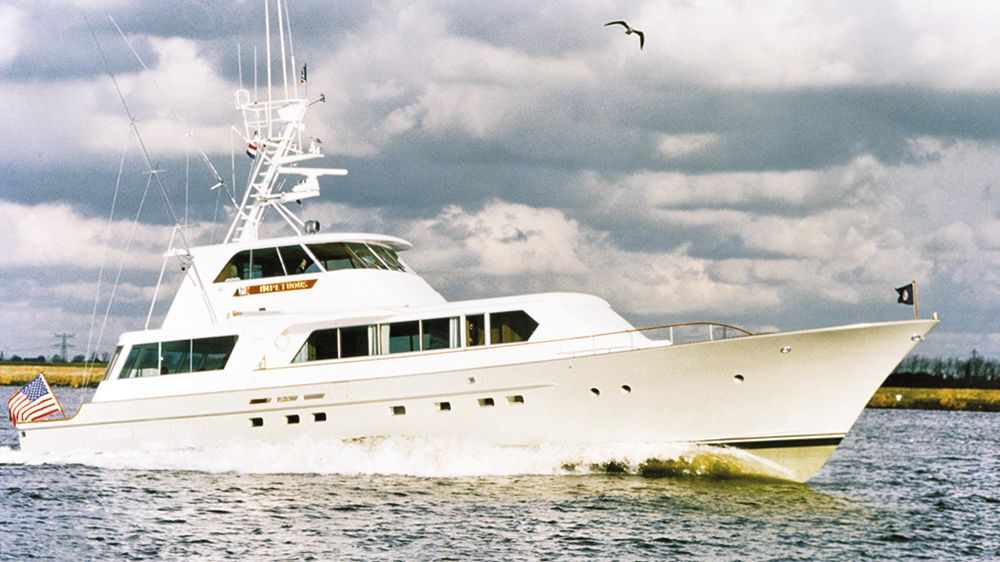
FEADSHIP
FEADSHIP
1977 - Impetuous, 26m
Speed was the primary consideration for this all-aluminium boat, with twin 1,200hp diesels. She has the swept-back wheelhouse typical of the genre, plus a well-equipped fish deck.
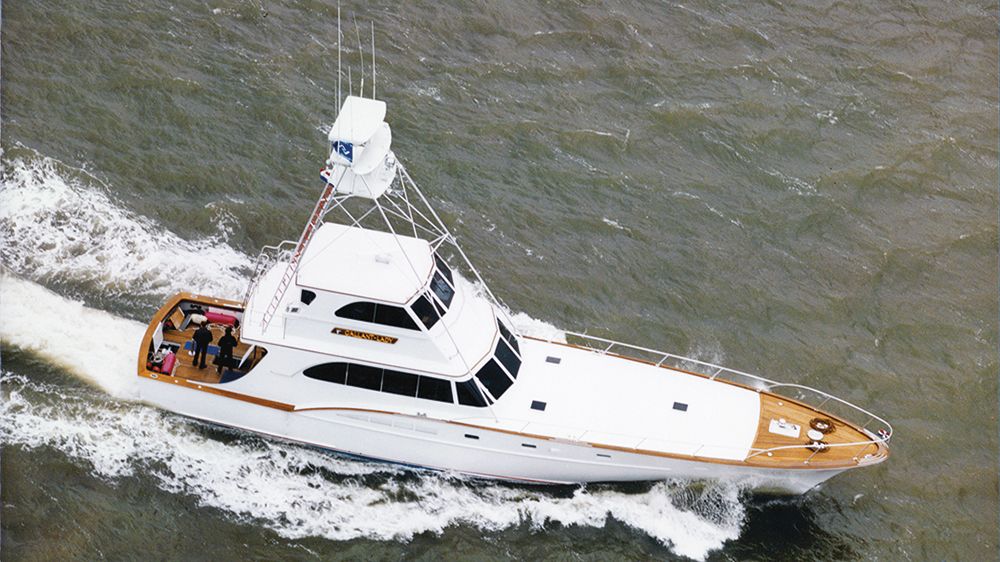
FEADSHIP
FEADSHIP
1984 - Gallant Lady, 27m
The 87-footer, built as hull No 629, is now called Catch. She featured an enclosed wheelhouse and a tuna tower, and gained an extra cabin with her latest refit.
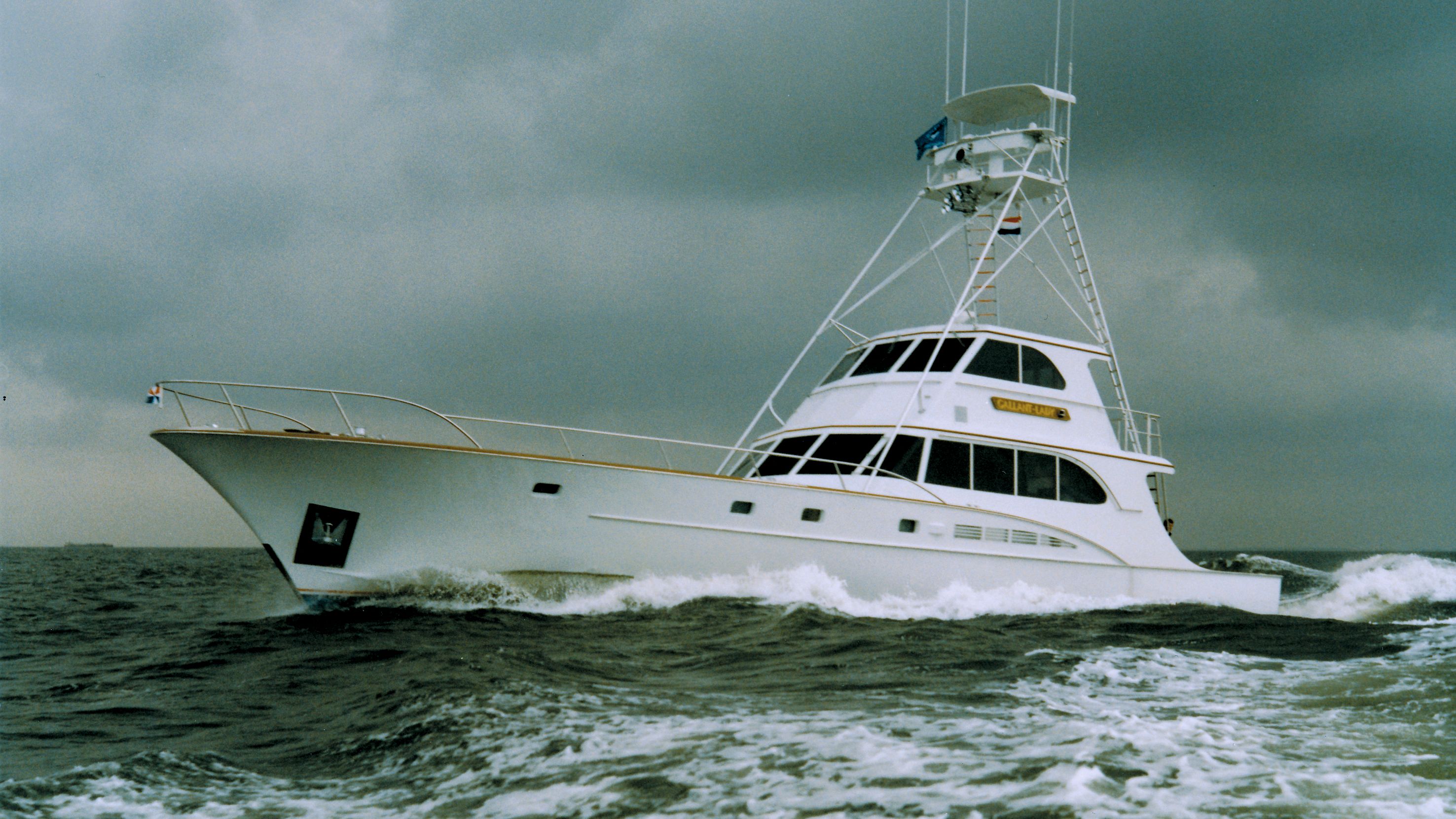
FEADSHIP
FEADSHIP
1984 - Gallant Lady, 27m
Feadship said it would only build Jim Moran’s sportfisher if it could build two of them. Hull No 630 has three cabins and was last refitted in 2005. She is now called Comanche.
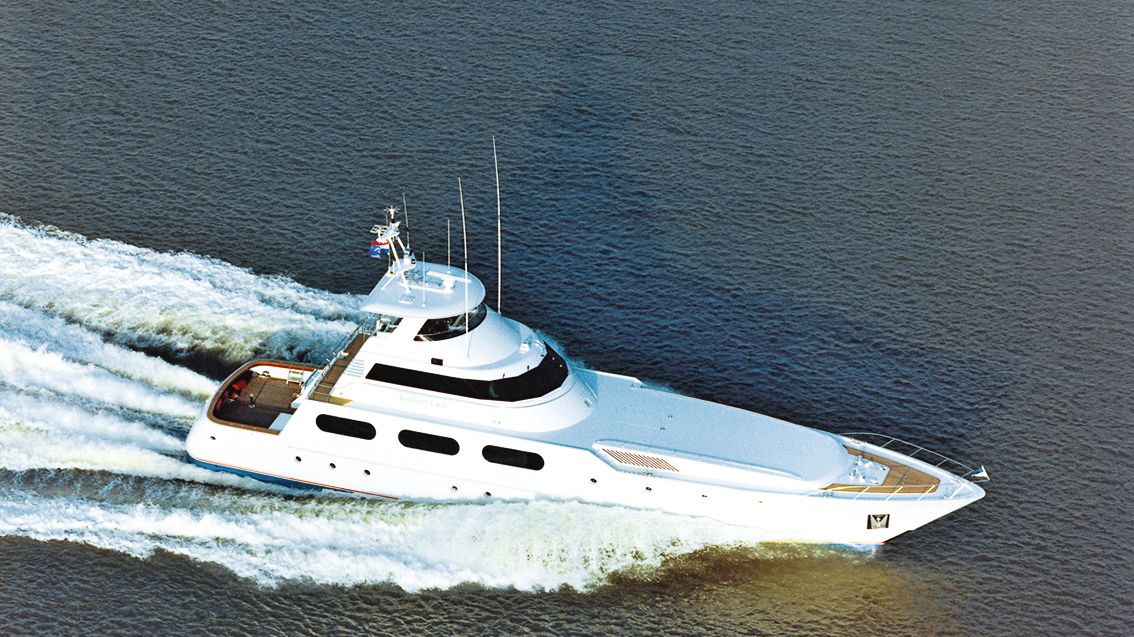
FEADSHIP
FEADSHIP
1988 - Gallant Lady, 36m
Moran soon wanted a larger boat for entertaining. Feadship abandoned the separation between the hull and superstructure but retained the sleek lines. Hull No 638 is now called M.
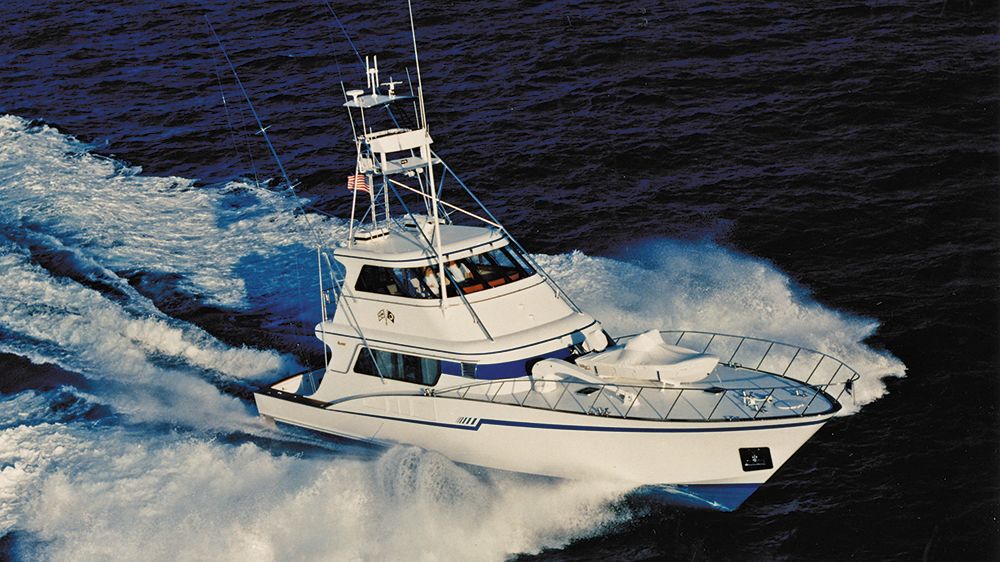
FEADSHIP
FEADSHIP
1988 - Patricia, 21m
Ordered by the owner of Carmac VI and VII, Patricia is a return to more traditional sportfishing lines with the benefits of wraparound glass in the wheelhouse. She is hull No 762.
Turning the foredeck from a tender storage and anchoring area to an extra social space also involved a lot of hard work, but it looks as if the boat was designed that way. Three skylights, four mooring bollards and some deck fillers, which all look original, had to be painstakingly cut out, then raised by no more than half of an inch to account for the planking. “The teak makes a profound aesthetic impression and covers a huge area,” Wilson says – 560 square feet, in fact, according to Feadship.
These small changes stripped away some of the less-than-timeless original details without tampering with the boat’s character
Voorhees knew that time was of the essence, so he kept his changes short and snappy. Top of the list of easy wins were the loose furnishings and soft goods. There’s a soft, natural linen for the dining settee and sofas, and Foglizzo leather the colour of soft putty for inlays on counter surfaces. He also swapped the heavy marble tops of the main dining table and two wheelhouse side tables for a striking bronze patina. “Those are a continuity from a previous project,” Voorhees says. “On the owner’s previous boat, we developed an amazing cast bronze dining table that referenced a work of art by Alexander Calder.”
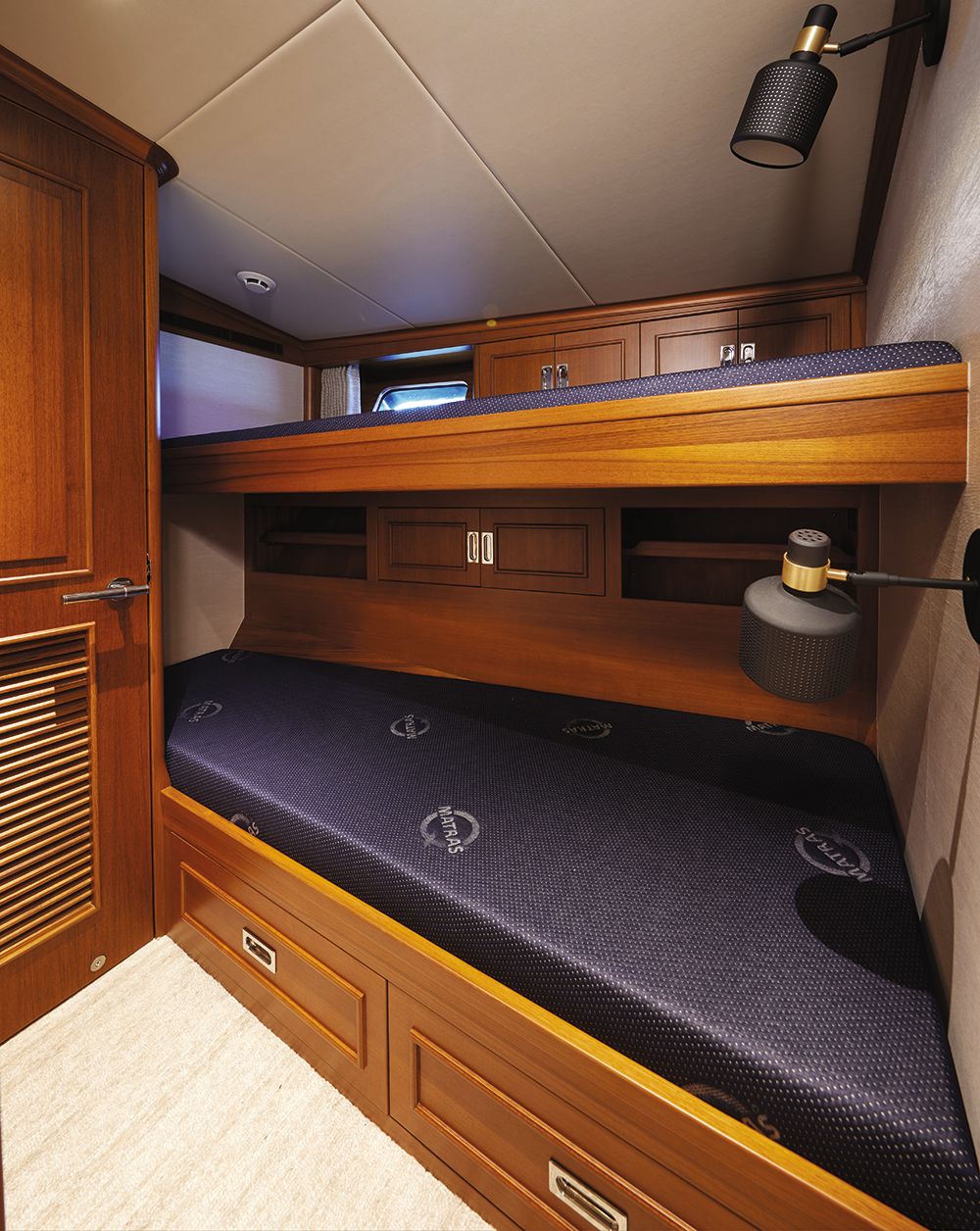
FEADSHIP
FEADSHIP
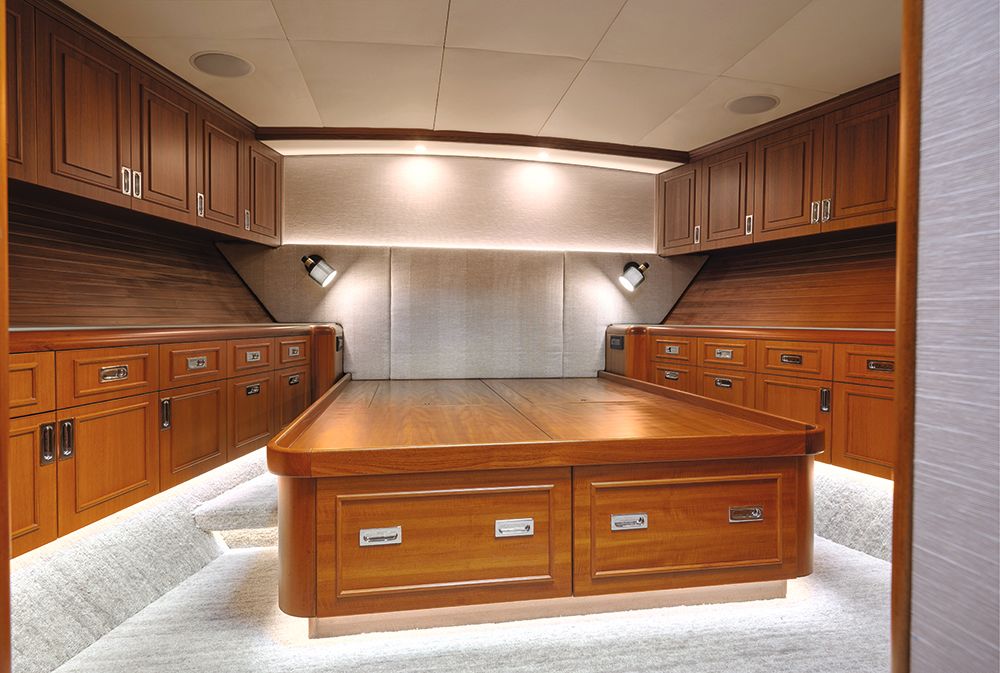
FEADSHIP
FEADSHIP
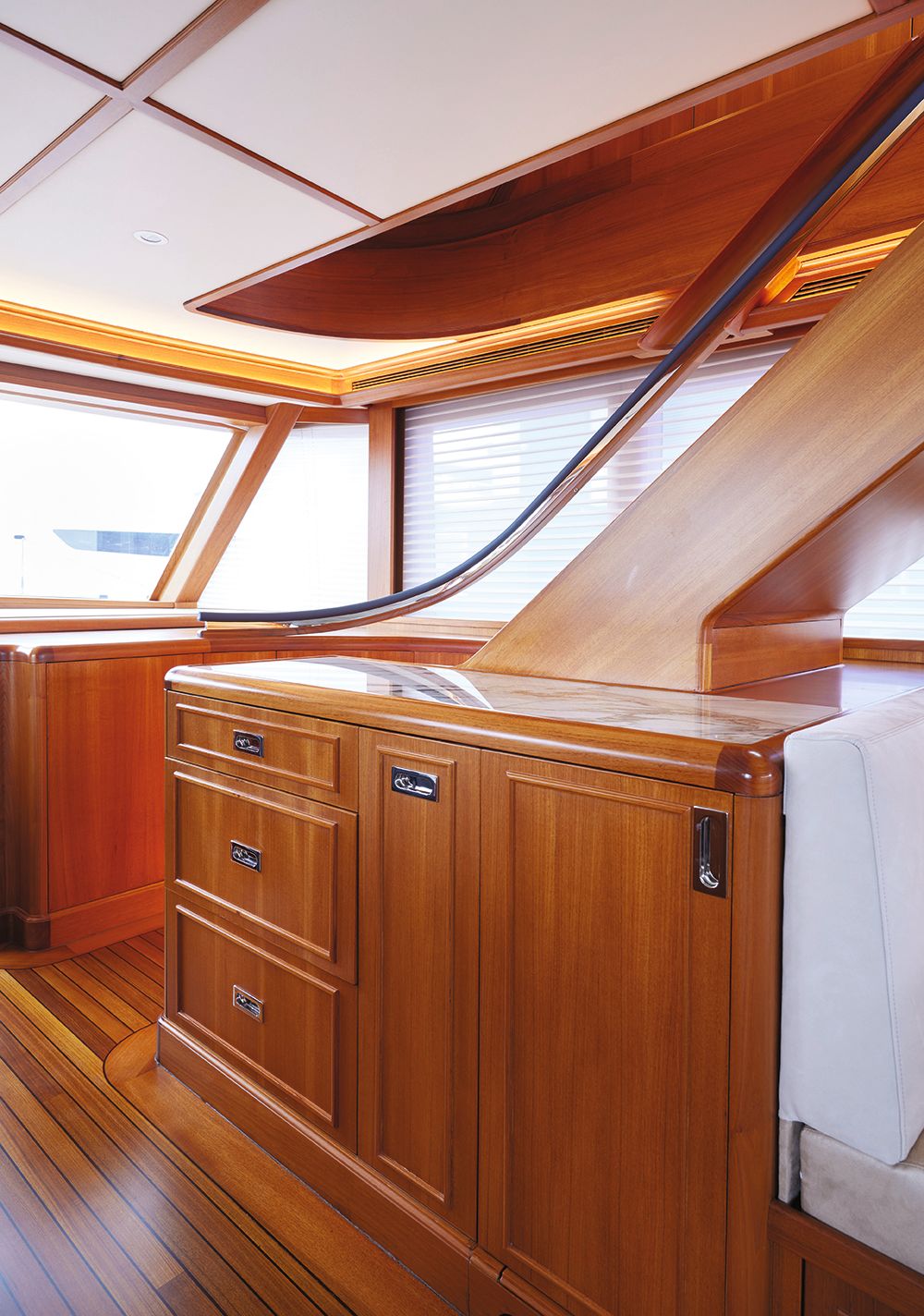
FEADSHIP
FEADSHIP
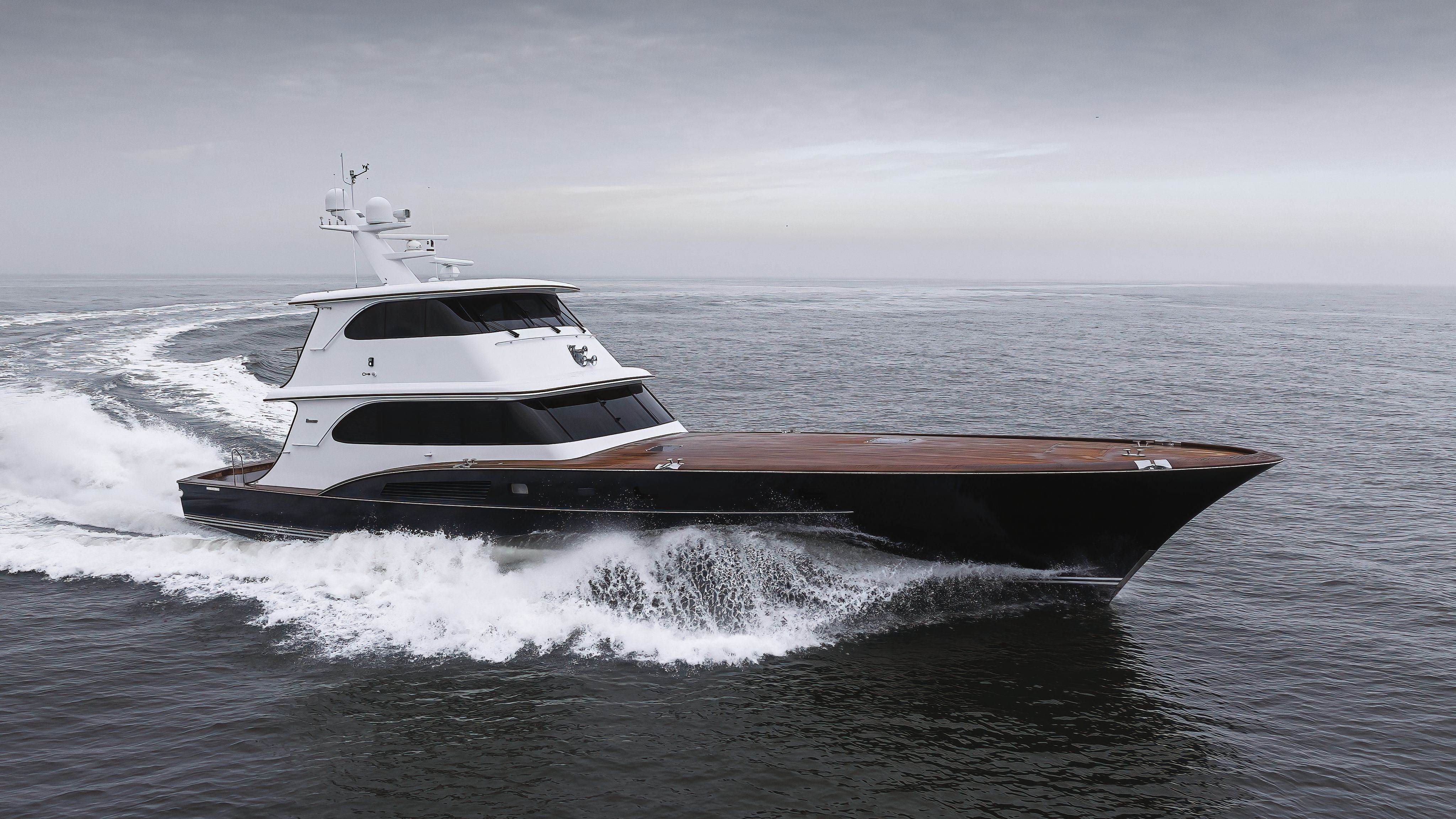
FEADSHIP
FEADSHIP
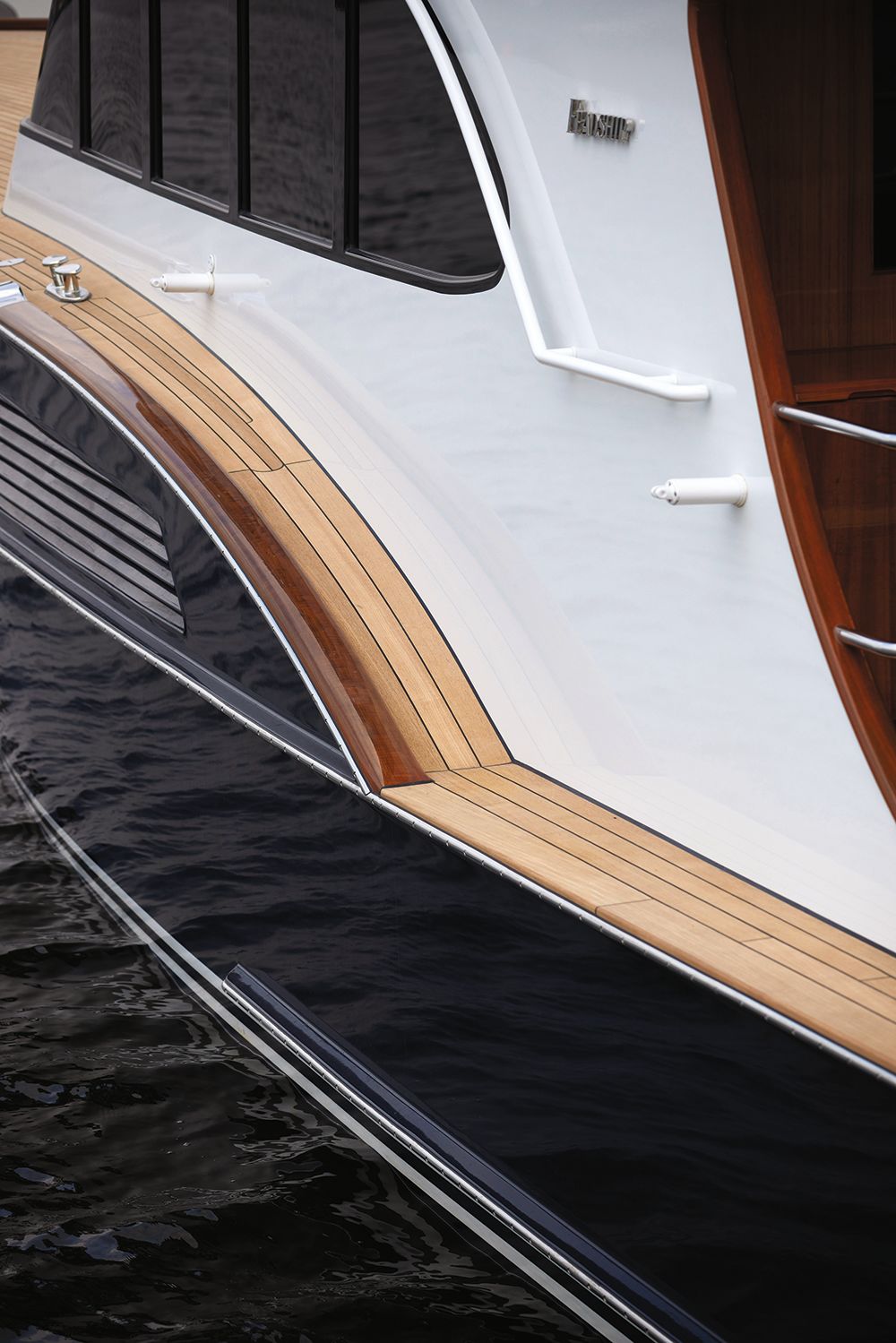
FEADSHIP
FEADSHIP
Removing the foredeck tender crane and taking a small bite out of the owner’s cabin (top centre) freed up space to create a fourth cabin left); interior designer Adam Vorhees concentrated on quick wins with this refit, including replacing all 175 handles on lockers and doors (top right); the boat’s original proportions have been fully respected, as have her rich woody stern and transom
An idea to introduce stainless-steel trim around the horizontal surfaces was discarded as excessively time-consuming. But Voorhees did change all the handles on the boat – some 175 of them if you include every locker and drawer. “There are some little pieces of jewellery, such as the handles for cabinetry,” he says. “Originally, there were little teak poles, but we changed that out to polished stainless steel.” These small changes stripped away some of the less-than-timeless original details without tampering with the boat’s character. “Refined gentleman’s smoking lounge” is how Voorhees sums it up.
Within days of my tour, Catch was being loaded aboard another cargo ship in Rotterdam to head back to Florida. It was a moment that her owner was keenly anticipating. “Um, yes!” he says, when I ask if it’s felt like a long wait. “It’s a week before she lands, and I am anxious to have her at the end of my pier.”
The owner is not a mad fisherman himself, although his son is. For him, the attraction is something else. “The sportfish is a uniquely American style and there is none as pretty as Catch. It should also be noted that due to the rigidity of her aluminium hull and frames, she has 360-degree glass on the main deck – something few if any other sportfishers can have. It’s quite a vista and a lovely treat to take in all the sea has to offer.”
First published in the December 2023 issue of BOAT International US Edition. Get this magazine sent straight to your door, or subscribe and never miss an issue.
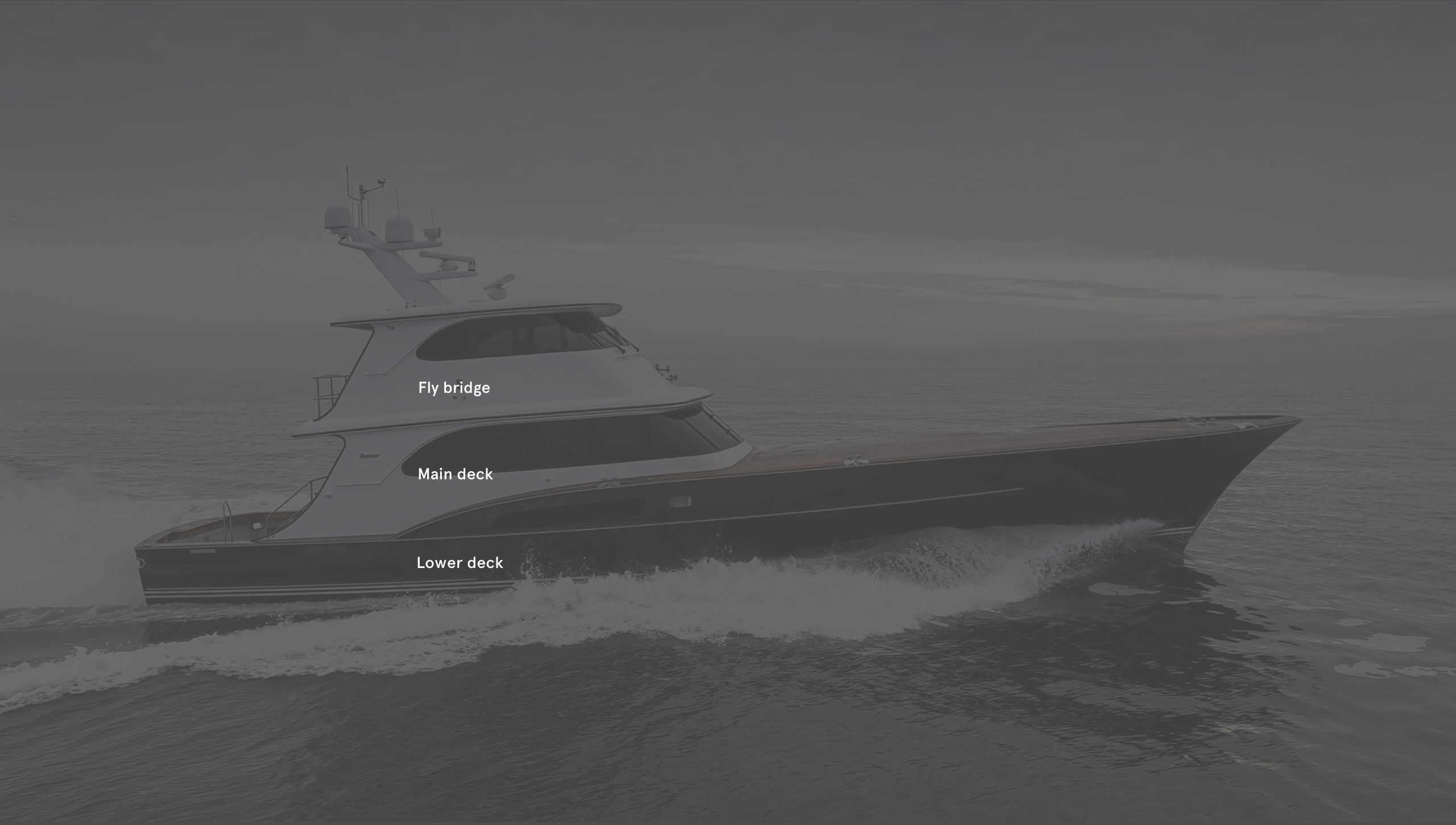
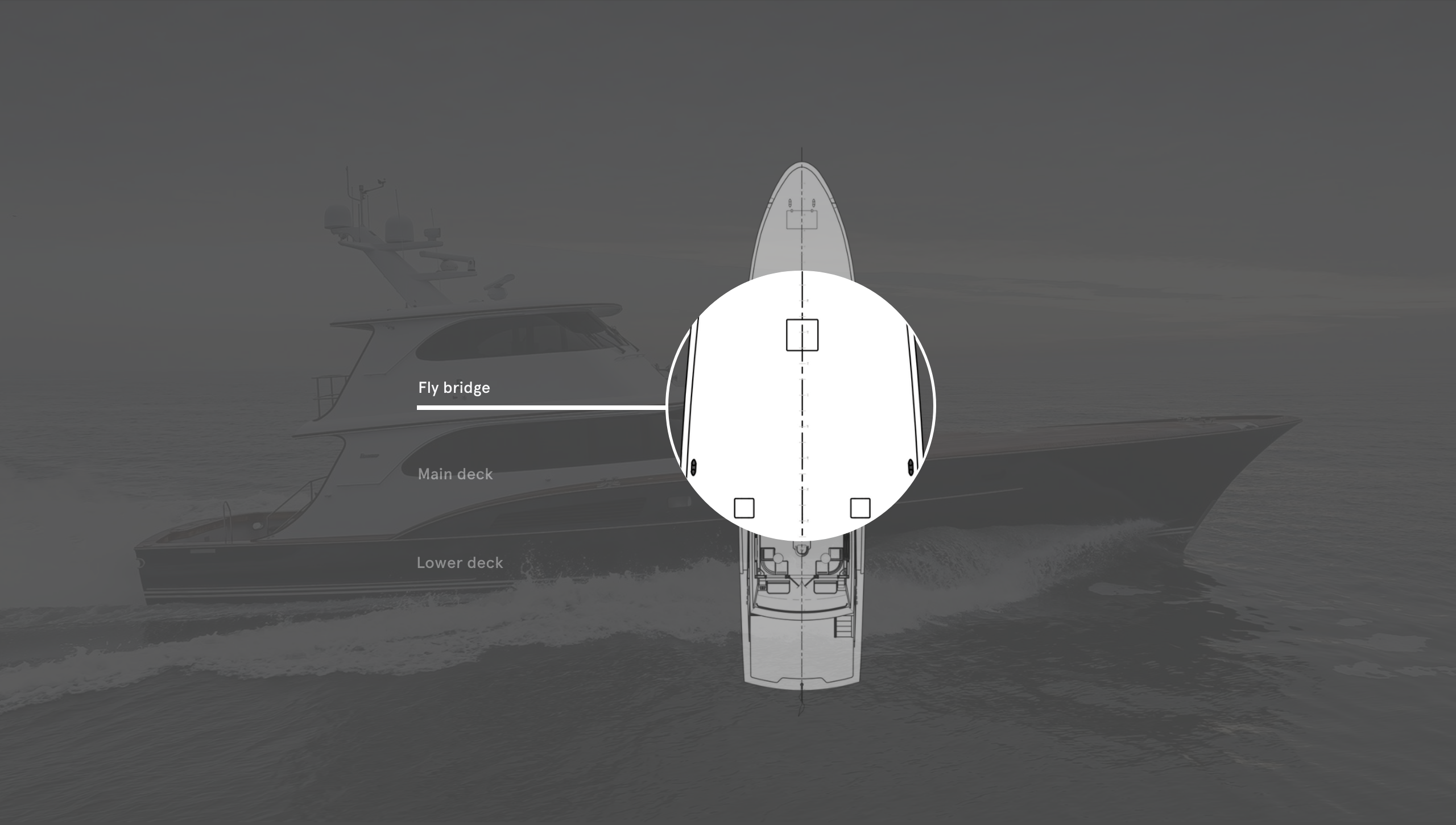
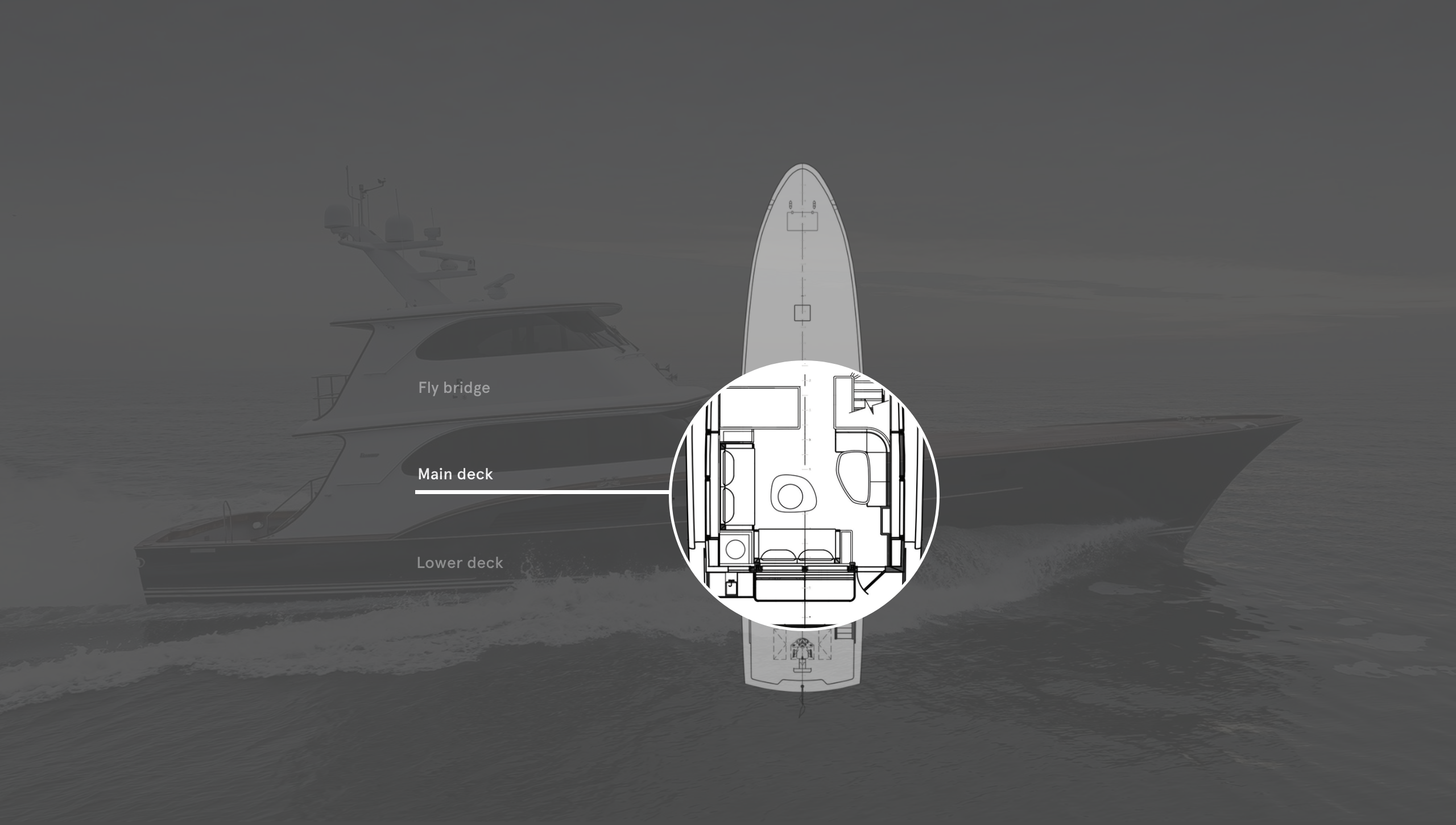
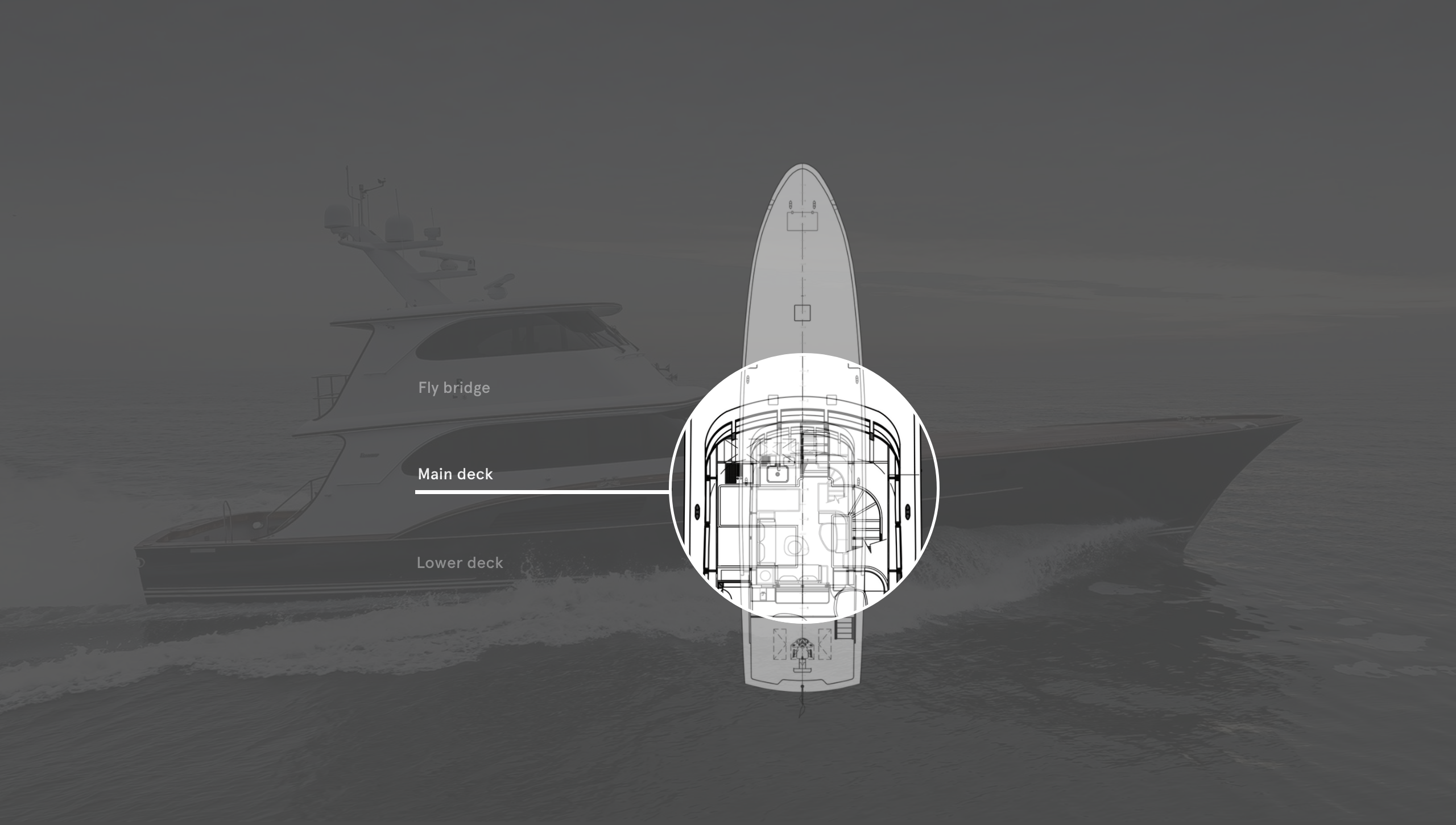
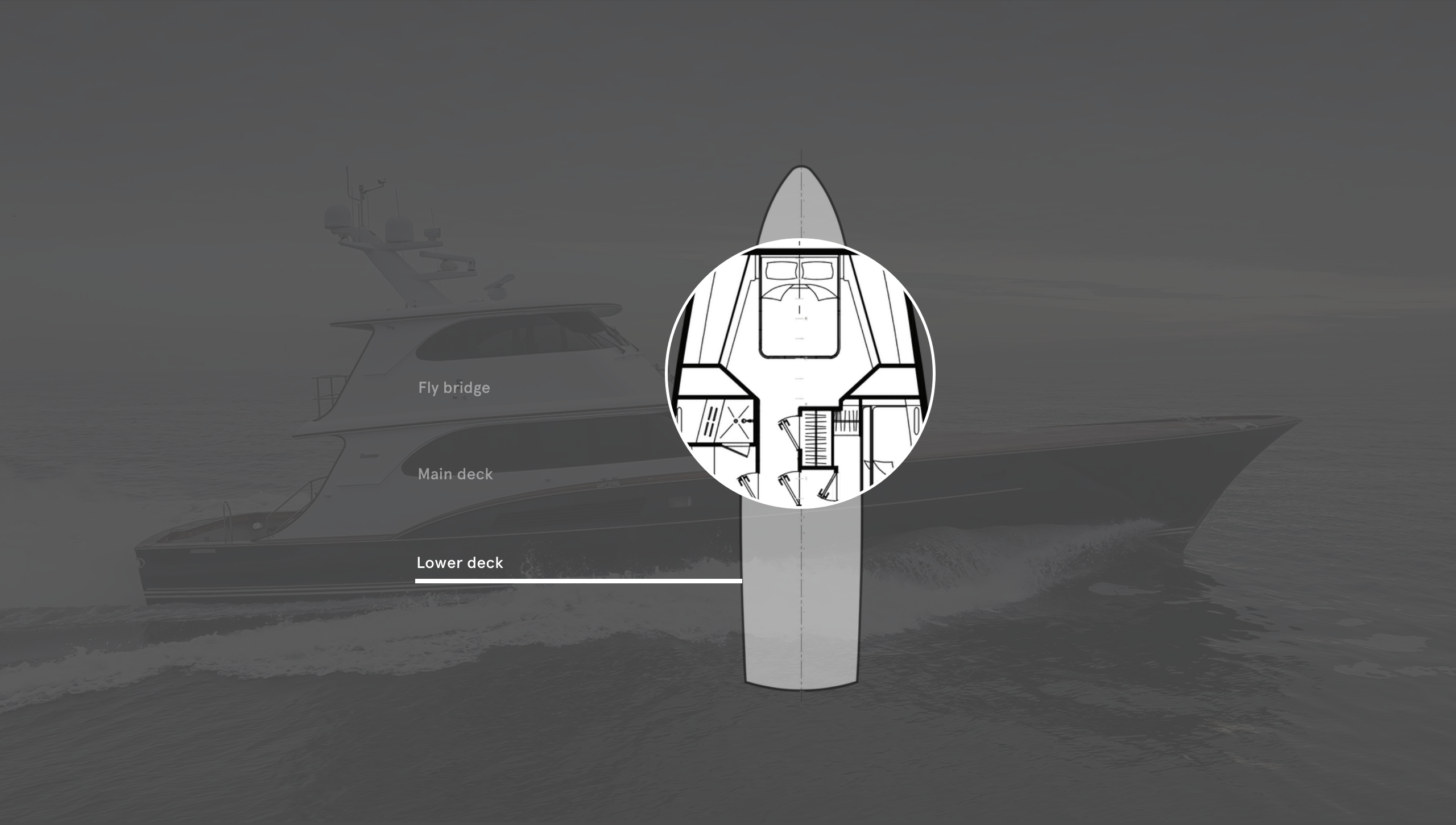
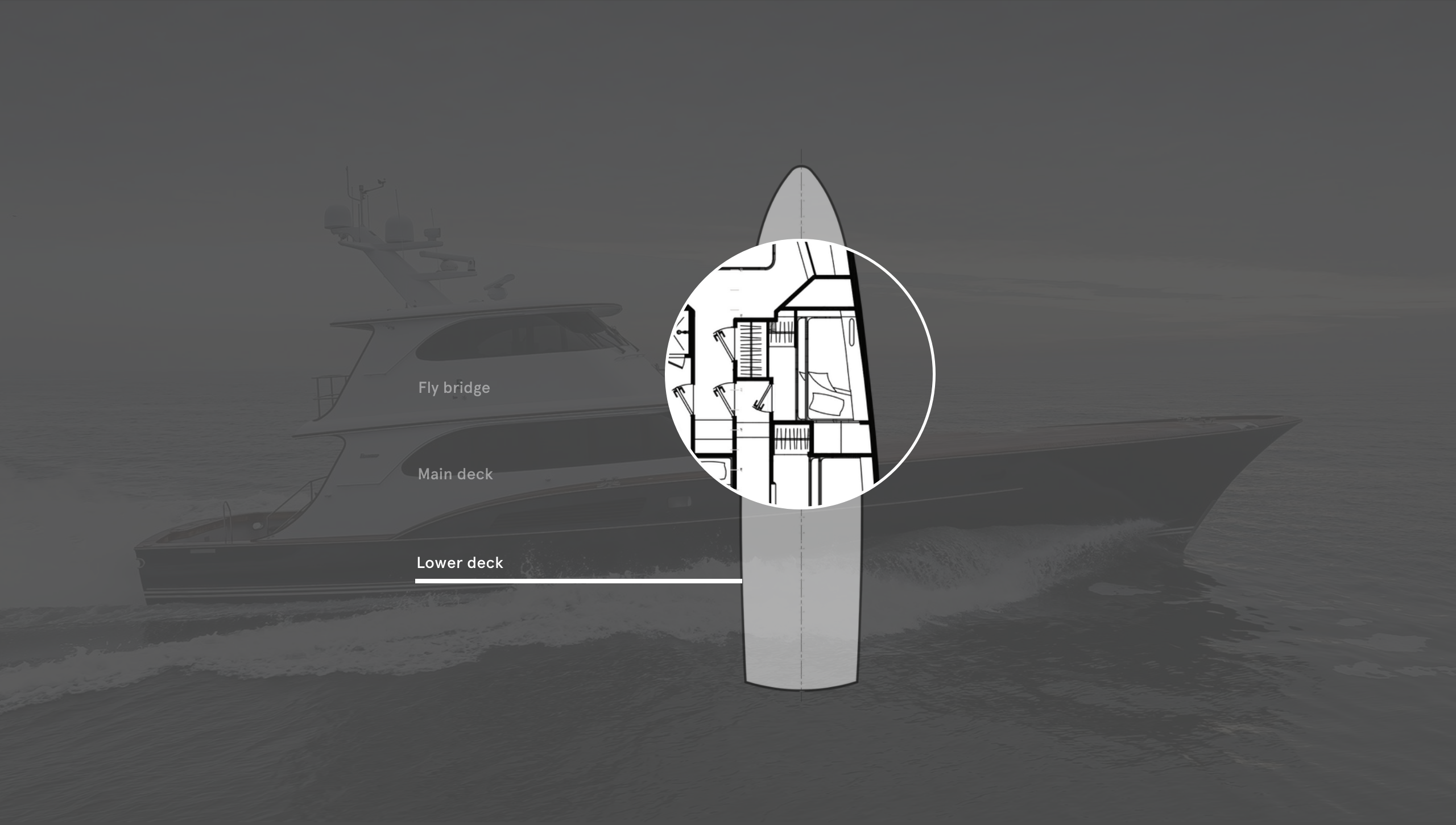
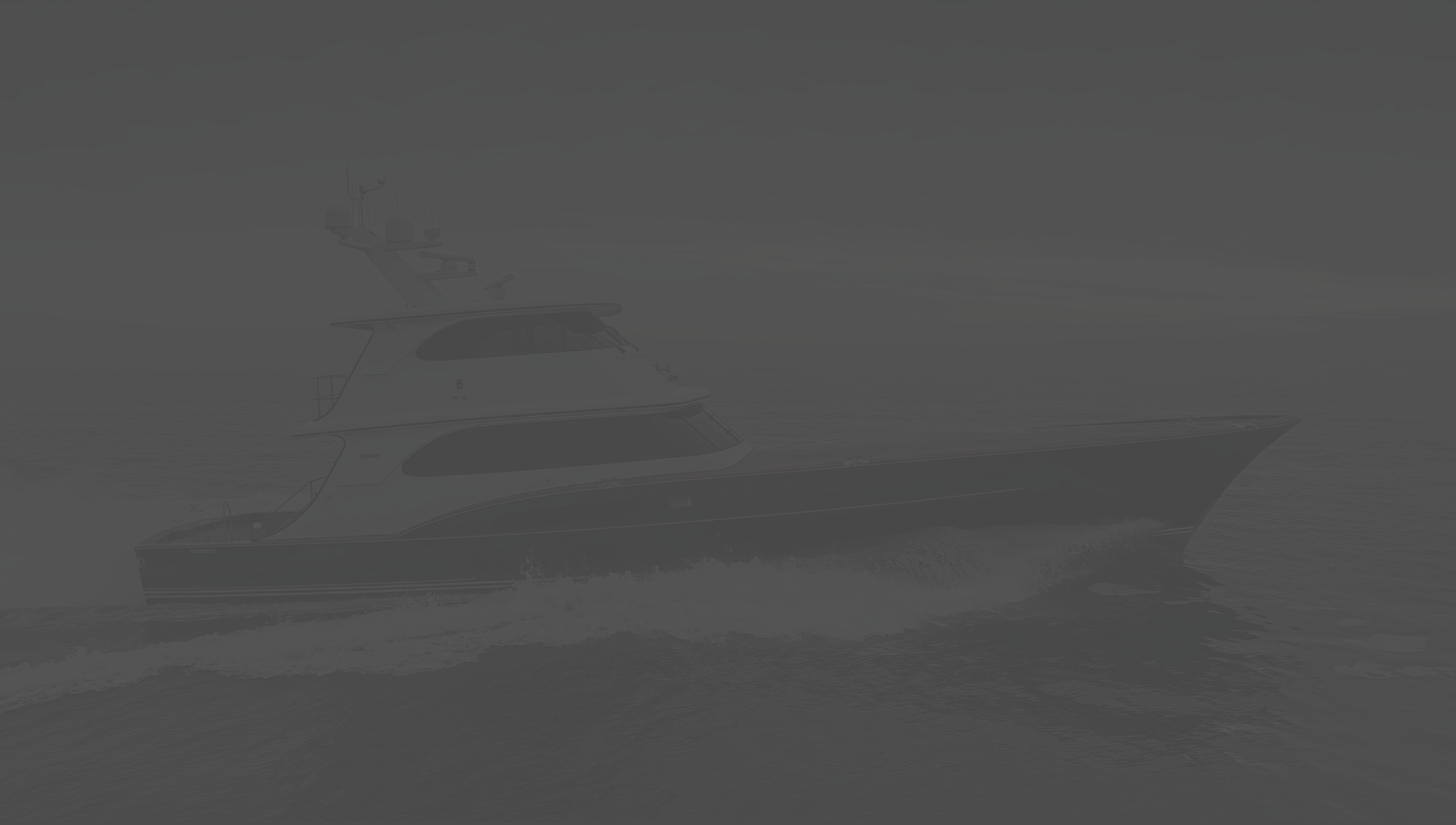
New carbon awning poles, speakers and lighting turn the foredeck into a space for entertainingng
The marble top dining table was replaced with bronze
Wraparound windows offer great views
The owner’s cabin has new lighting, carpet, wall coverings and cabinet handles
An additional cabin looks like it was always meant to be there
LOA 26.6m | Gross tonnage |
LWL 23.7m | Engines |
Beam 6.3m | Generators |
Draft | Speed (max/cruise) |
Range at 21 knots | Owners/guests 6 |
Fuel capacity Freshwater capacity | Crew 2
|
Naval architecture | Builder/year |
Exterior styling | Refit interior design |
Refit yard/year | |

